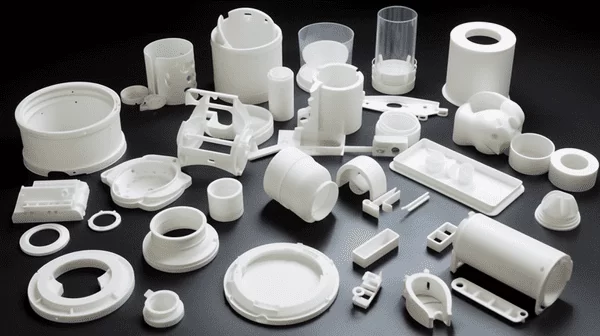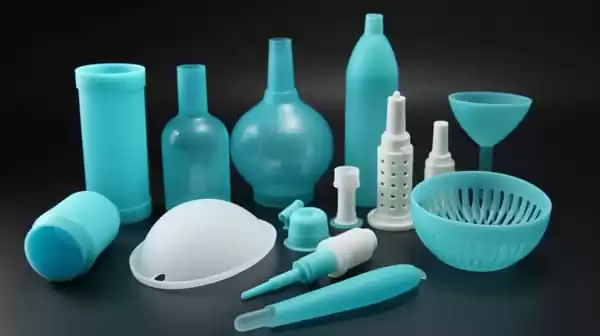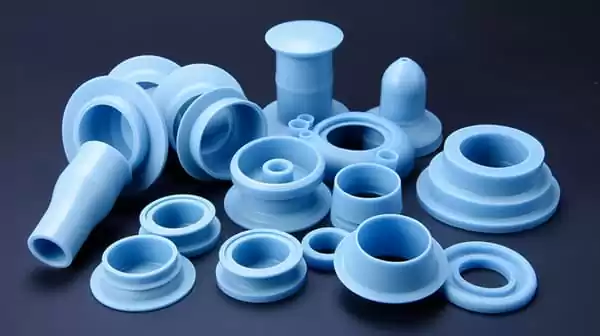Introduction
Compression molding is a highly utilized manufacturing process that involves shaping raw materials into various products. It is widely employed in industries such as automotive, aerospace, and consumer goods. This process entails placing a preheated material, typically a thermosetting polymer, into a heated mold cavity. The material is then compressed under high pressure until it takes the desired shape. The heat and pressure facilitate the curing or hardening of the material, resulting in a durable and precise end product.
While compression molding offers numerous benefits in terms of efficiency and quality, it is crucial to prioritize operator safety throughout the operation. The well-being of compression molding operators is paramount, considering the potential hazards associated with heat, pressure, chemicals, and machinery. By adhering to safety protocols and implementing proper safety measures, operators can carry out their tasks confidently and minimize the risk of accidents or injuries. In this article, we will delve into the essential safety considerations and requirements that compression molding operators should be aware of to maintain a safe working environment.

Section 1: Safety Considerations
Personal Protective Equipment (PPE)
To ensure the safety of compression molding operators, the use of appropriate personal protective equipment (PPE) is essential. This includes:
Safety Glasses: Operators must wear safety concerns to protect their eyes from potential hazards such as flying debris or chemical splashes.
Safety Equipment: Utilizing safety equipment, such as heat-resistant gloves, aprons, and face shields, provides additional protection against heat and chemical exposure.
Safety Shoes: Operators should wear safety shoes with reinforced toes to safeguard against falling objects or potential foot injuries.

Machine Safety
Comprehensive training and understanding of safety features are imperative for operators working with compression molding machines. Key considerations include:
Training: Operators should undergo comprehensive training on machine operation, safety protocols, and emergency procedures.
Safety Features: Operators must familiarize themselves with the safety features of the machine, such as emergency stop buttons, safety interlocks, and guarding systems.
Regular Maintenance: Routine inspections and maintenance of the machinery should be conducted to ensure optimal performance and identify any potential safety hazards.
Material Handling
Proper material handling techniques help minimize the risk of accidents and injuries. Operators should follow these guidelines:
Lifting Techniques: Operators should be trained in proper lifting techniques, including using their leg muscles and not their back, to avoid strains or injuries.
Mechanical Aids: The use of mechanical aids, such as hoists or forklifts, can assist in safely moving heavy materials or molds.
Organized Storage Areas: Maintain a clean and organized workspace with designated storage areas for materials and tools to prevent tripping hazards and improve efficiency.
Chemical Exposure
Compression molding often involves the use of chemicals and urethane casting resins, which can pose potential hazards. Operators should be aware of the following:
Potential Hazards: Understand the hazards associated with the chemicals used in the process, such as skin irritation, respiratory issues, or chemical burns.
Handling and Storage Procedures: Follow proper procedures for handling, storing, and disposing of chemicals to minimize exposure and potential accidents.
Ventilation: Adequate ventilation systems should be in place to ensure the removal of chemical fumes and maintain a safe working environment.

Heat and Fire Hazards
Given the high temperatures involved in compression molding, heat and fire hazards should be addressed. Safety precautions include:
Fire Prevention: Implement fire prevention measures, such as regular cleaning of machinery, avoiding flammable materials near the work area, and adhering to strict smoking policies.
Emergency Exits: Ensure that emergency exits are clearly marked, unobstructed, and easily accessible in case of a fire or other emergencies.
Proper Housekeeping Practices: Maintain a clean and organized workspace to minimize the risk of fires caused by oil spills, debris buildup, or other combustible materials.

Ergonomics
Considering the physical demands of compression molding, proper ergonomics play a vital role in ensuring operator safety and well-being. Key aspects include:
Good Posture: Promote the importance of maintaining good posture to reduce the risk of musculoskeletal disorders and repetitive strain injuries.
Adjustable Workstations: Provide adjustable workstations and equipment to accommodate operators of different heights and body types.
Ergonomic Training: Educate operators on ergonomic principles and techniques, including stretching exercises and proper body mechanics, to prevent injuries.
Lockout/Tagout Procedures
Lockout/tagout procedures are critical for the safety of operators during maintenance or repair work. Operators should understand and follow these procedures:
Importance of Procedures: Emphasize the significance of isolating energy sources and locking out or tagging out equipment to prevent accidental startup during maintenance or repair tasks.
Proper Training: Ensure operators receive comprehensive training on lockout/tagout procedures, including the use of lockout devices and proper tagging practices.
By prioritizing these safety considerations, compression molding operators can work in a secure environment and reduce the risk of accidents or injuries. Ensuring the use of proper personal protective equipment, understanding machine safety features, practicing safe material handling techniques, addressing chemical exposure, and implementing measures for heat and fire hazards, ergonomics, and lockout/tagout procedures are crucial for maintaining a safe and healthy workplace.
Section 2: Injection Molding Safety precautions
Specific Safety Measures for Injection Molding Operators
Injection molding process is a common technique used in manufacturing processes, and specific safety measures are essential to protect operators. Key considerations include:
Personal Protective Equipment (PPE)
Operators should wear appropriate personal protective equipment to mitigate risks during injection molding operations. This includes:
Safety Glasses: Eye protection is vital to safeguard against potential flying debris, chemical splashes, or hot molten plastic.
Safety Gloves: Heat-resistant gloves or gloves specifically designed for handling chemicals provide protection against burns and chemical exposure.
Respiratory Protection: Depending on the materials being used, operators may need respiratory protection, such as masks or respirators, to prevent inhalation of fumes or particulate matter.
Machine Guards and Safety Precautions
Injection molding machines require adequate safety measures to prevent accidents and injuries. Operators should adhere to the following precautions:
Machine Guards: Ensure that machine guards are in place to protect operators from moving parts, hot surfaces, or ejected materials.
Safety Interlocks: Utilize safety interlock systems to prevent machine operation when guards or access doors are not properly closed.
Material Change Procedures: Follow specific safety procedures when changing materials, including purging the machine and conducting proper cleaning to minimize contamination and potential hazards.
Maintenance Safety: During maintenance activities, operators should adhere to lockout/tagout procedures, ensuring machines are powered off and locked out to prevent accidental startup.
By implementing these safety measures, plastic injection molding operators can significantly reduce the risk of accidents, injuries, and exposure to potential hazards. Personal protective equipment, machine guards, and adherence to safety protocols during material changes and maintenance play a crucial role in maintaining a safe working environment for operators.
Section 3: Requirements Used in Compression Molding
To ensure successful compression molding operations, several key requirements must be met. These requirements encompass material selection and preparation, temperature and pressure control, and mold quality. Let’s explore each aspect in detail:
Material Selection and Preparation
The choice of materials is crucial in compression molding. Consider the following requirements:
Plastic Materials: Select materials suitable for compression molding, such as thermosetting polymers that can undergo curing or hardening under heat and pressure.Chemical Structure: Understand the chemical structure of the material to determine the appropriate processing parameters and achieve desired mechanical properties.
Material Preprocessing: Prepare materials by cutting them into the proper shape or size, ensuring uniformity and efficient material flow during the molding process.
Temperature and Pressure Control
Accurate temperature and pressure control are essential for achieving optimal results in compression molding. Consider the following requirements:
Heating and Cooling: Maintain precise control over the heating and cooling processes to ensure proper material flow and curing. Temperature variations can affect the final product’s quality and properties.
Time-Temperature Profile: Follow specific time-temperature profiles or curing cycles recommended by material manufacturers to achieve the desired curing and consolidation of the material.
Pressure Application: Apply the appropriate pressure during the molding process to facilitate the proper distribution of the material and eliminate voids or defects.
Mold Quality
The quality of the mold used in compression molding greatly influences the final product. Pay attention to the following requirements:
Mold Design: Ensure that the mold design accommodates the desired shape and features of the final product. Proper venting, gate placement, and parting line design are crucial for optimal molding.
Mold Surface Finish: The mold surface should have the appropriate finish to prevent sticking or deformation of the molded product.
Mold Maintenance: Regularly inspect and maintain the mold to prevent wear, damage, or degradation that could affect the quality of the molded parts.
By meeting these requirements, operators can achieve successful compression molding operations. Proper material selection and preparation, precise temperature and pressure control, and high-quality molds contribute to producing molded products that meet the desired specifications and performance criteria.
Section 4: Hazards of Molding
Compression molding operations involve several potential hazards that operators need to be aware of. It is crucial to prioritize safety measures and take appropriate precautions to mitigate these risks. Some common hazards in compression molding include chemical exposure, nozzle heater bands burns, machinery accidents, and electrical hazards. Let’s delve into each of these hazards:
Chemical Exposure
Compression molding often involves the use of chemicals and resins, which can pose risks if not handled properly. Operators should be aware of the following:
Hazardous Chemicals:
Some chemicals used in compression molding can cause skin irritation, respiratory issues, or chemical burns. Operators should familiarize themselves with the Material Safety Data Sheets (MSDS) of the materials being used.
Personal Protective Equipment (PPE):
Utilize appropriate PPE, such as gloves, goggles, and respirators, to minimize the risk of chemical exposure.
Ventilation:Adequate ventilation systems should be in place to remove chemical fumes and maintain a safe working environment.
Burns
The high temperatures involved in compression molding pose the risk of burns to operators. Safety precautions include:
Heat-resistant PPE: Wear heat-resistant gloves, aprons, and other protective clothing to minimize the risk of burns from hot molds, materials, or equipment.
Temperature Control: Properly control and monitor the heating and cooling processes to prevent accidental contact with hot surfaces.
Machinery Accidents
Compression molding machines can present various hazards if not operated or maintained correctly. Operators should consider the following:
- Machine Guarding: Ensure that machine guards are in place to prevent access to moving parts, hot surfaces, or ejected materials.
- Training and Maintenance: Provide comprehensive training on machine operation, safety features, and emergency procedures. Regular maintenance and inspections are essential to keep machinery in good working condition and minimize the risk of accidents.
Electrical Hazards
Electrical systems are integral to compression molding operations and can pose electrical hazards if not handled properly. Operators should be cautious of:
- Electrical Equipment: Ensure that electrical equipment, such as wiring and connections, is well-maintained and properly grounded to prevent electric shocks or fires.
- Qualified Personnel: Only qualified personnel should handle electrical repairs or modifications to minimize the risk of electrical accidents.
Operators must be aware of these potential hazards and follow proper safety procedures to mitigate risks. This includes wearing appropriate PPE, implementing machine guarding, receiving thorough training, and adhering to maintenance protocols. Regular risk assessments and promoting a safety-conscious culture are crucial in minimizing accidents and ensuring a safe working environment during compression molding operations.
Section 5: Factors Affecting the Compression Molding Process
Several factors can significantly impact the compression molding process. Operators must understand and control these factors to achieve desired outcomes and ensure the efficiency and quality of the molded products. Let’s explore the key factors involved:
Temperature and Pressure Control
Temperature and pressure control play a crucial role in compression molding. Operators should consider the following:
- Heating and Cooling: Properly heating the mold and material to the recommended temperature range ensures optimal material flow, curing, and consolidation. Precise cooling helps in solidifying the molded part and preventing deformation.
- Pressure Application: Applying the appropriate pressure during the molding process facilitates proper material distribution, helps eliminate voids or defects, and promotes better consolidation.
Material Selection
The selection of the material used in compression molding is essential for achieving desired properties and performance. Considerations include:
- Material Characteristics: Different materials have varying melt flow properties, curing requirements, and mechanical properties. Operators should choose materials that meet the desired specifications and performance criteria.
- Material Compatibility: The material should be compatible with the mold and other components involved in the compression molding process. Compatibility ensures proper filling, curing, and part release.
Mold Design
The design of the mold has a significant impact on the quality and efficiency of the compression molding process. Operators should focus on:
- Parting Line and Gate Design: The parting line and gate location should be carefully considered to facilitate proper material flow and minimize the risk of defects or mold damage.
- Venting: Adequate venting in the mold helps remove trapped air and gases during the compression process, reducing the risk of voids and improving part quality.
- Mold Release: Proper mold surface treatment and release agents ensure easy part removal and prevent sticking or damage to the molded product.
Cycle Time
The cycle time, including the time for heating, cooling, and curing, affects the productivity and efficiency of compression molding. Operators should optimize cycle times without compromising part quality or integrity.
Operator Skill
The skill and experience of the operator play a crucial role in the success of the compression molding process. Factors to consider include:
- Material Handling and Loading: Operators should be skilled in handling and preparing materials, ensuring proper loading into the mold and minimizing waste or errors.
- Process Monitoring and Adjustment: Operators need to monitor and adjust process parameters, such as temperature, pressure, and cycle times, to optimize the molding process and troubleshoot any issues that arise.
- Mold Maintenance: Regular mold maintenance, including cleaning, inspection, and repair, ensures the longevity and performance of the mold.
By understanding and effectively controlling these factors, operators can optimize the compression molding process, achieve consistent part quality, and enhance overall productivity. Careful consideration of temperature and pressure control, material selection, mold design, cycle time, and operator skill is essential for successful compression molding operations.

Conclusion
In conclusion, compression molding is a widely used manufacturing process that requires careful attention to safety considerations and specific requirements for successful operations. Throughout this article, we have discussed key aspects related to safety, material requirements, hazards, and factors affecting the compression molding process. It is crucial for operators to prioritize safety, receive proper training, and maintain a safe working environment. By doing so, they can protect themselves from potential risks and contribute to a productive and accident-free workplace.
The safety considerations in compression molding encompass personal protective equipment (PPE) such as safety glasses, safety equipment, and safety shoes. Machine safety measures include comprehensive training, understanding safety features, and regular maintenance. Proper material handling techniques, such as lifting methods and organized storage, minimize the risk of injuries. Addressing chemical exposure hazards, heat and fire hazards, ergonomics, and lockout/tagout procedures are crucial for operator safety.
Moreover, specific safety measures for injection molding operators were highlighted, including the use of PPE, machine guards, and precautions during material changes and maintenance. Additionally, the requirements for successful compression injection molding machine operations were discussed, including material selection and preparation, temperature and pressure control, and mold quality.
Hazards associated with compression molding, such as chemical exposure, burns, machinery accidents, and electrical hazards, were outlined. It is vital for operators to be aware of these hazards and implement proper safety measures to mitigate risks effectively.
Lastly, the factors affecting the compression molding process were examined, including temperature and pressure control, material selection, mold design, cycle time, and operator skill. Understanding and controlling these factors contribute to achieving desired outcomes and maintaining efficiency and quality in the molding process.
In conclusion, operators in compression molding must prioritize safety, receive appropriate training, and maintain a safe working environment. By adhering to the outlined safety considerations, requirements, and precautions, operators can mitigate risks, minimize accidents, and contribute to a productive and safe manufacturing environment. Remember, safety should always be the top priority in compression molding operations.



